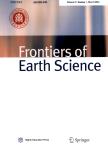版权所有:内蒙古大学图书馆 技术提供:维普资讯• 智图
内蒙古自治区呼和浩特市赛罕区大学西街235号 邮编: 010021

作者机构:State Key Joint Laboratory of Environmental Simulation and Pollution Control School of Environment Beijing Normal UniversityBeijing 100875 China Institute of Geographical Sciences and Natural Resources Research Chinese Academy of Sciences Yucheng Comprehensive Experimental Station Beijing 100101 China
出 版 物:《中国高等学校学术文摘·地球科学》 (FRONTIERS OF EARTH SCIENCE IN CHINA)
年 卷 期:2009年第3卷第1期
页 面:112-117页
核心收录:
学科分类:07[理学] 0708[理学-地球物理学]
基 金:国家自然科学基金(40871237 30700106)
主 题:environmental sustainability landscape ecological footprint ecological capacity town development
摘 要:The urban fringe, which can be seen as a special form of regional ecosystem with a spatial transition from urban to rural areas, has strong heterogeneity and is a typical ecologically sensitive area. The expansion of cities and the landscape effect of the changes have attracted wide attention. The primary aim of this study is to obtain an understanding of the spatial patterns of landscape conversion and the corresponding environmental sustainability. With the help of GIS and Fragstats software, the changes of landscape patterns before and after town planning were compared in An-Ding town of Beijing, of which the sustainability was also revealed based on the ecological footprint using social and economic statistic data. Theresults showed that the landscape pattern changed greatly during its conversion from several villages to a small town and the landscape fragmentation increased due to road construction. Meanwhile, human disturbance increased with the constructed land extension. For the gap between the ecological footprint and the biological capacity, AnDing town ran an ecological deficit at that period, which means it was unsustainable. However, the environmental sustainability decreased after planning due to the degraded green land and forest. The results suggested that ecological management should be strengthened during the town planning period.